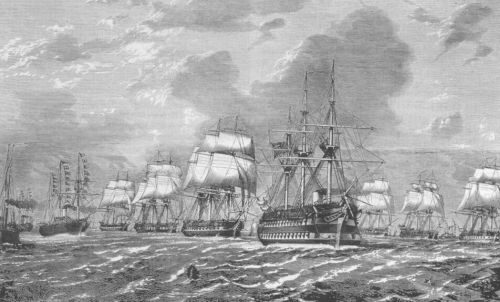- Author
- Draper, MN, Captain
- Subjects
- Early warships
- Tags
-
- RAN Ships
- None noted.
- Publication
- June 2002 edition of the Naval Historical Review (all rights reserved)
Extract from the recollections of the late Captain Draper MN

(Photo from R. Nicholl’s Collection)
[Ed:”The Flying Squadron was especially formed under the command of Admiral Phipps-Hornby for a specific world circumnavigation cruise, designed to improve professional seamanship training in the Royal Navy and to “show the flag” en route. While acknowledging that the ships had full crews of several hundred men each, the standards of evolutions and sail drill were most impressive, as seen from this account. “).
HMS Endymion came up wanting a pilot. I took pilotage charge. She was a ship of 4,000 tons. When approaching Hobson’s Bay, the wind being right aft we carried sails including ten studding sails. The wind was fresh and the ship making about 7 knots, when the Captain came in to me and requested that I keep all sails set till I got right abreast of the Gellibrand lightship. I explained to him that it was less than a mile from there to the Breakwater pier and in that space the four ships of the squadron were anchored (HM Ships Liverpool, Liffey, Phoebe and Barossa).
The Captain begged me to act as he requested, pledging himself to have all sail taken in and furled in two and a half minutes. I consented to act as he wished and when right abreast of the first ship, the ship going 7-8 knots, I gave the order to “In all sail” and in less than two minutes and a half, the ten studding sails together with the ship’s square sails from the three royals downwards were all furled. After difficulties I was able to anchor the ship in a safe position between the two warships.
NB. Captain Draper served as Sea Pilot from 10 Aug 1852 to 31 Mar 1889, then as a skilled member of the Court of Marine Enquiry and as Examiner of Masters and Mates applying for Pilotage Exemption Certificates for Port Phillip Bay, and candidates offering themselves to become pilots. He remained in the former position until 1894 when his sight became so bad he had to retire from it. He retained the last appointment up until the turn of the century although he had entirely lost his sight since 1895.




